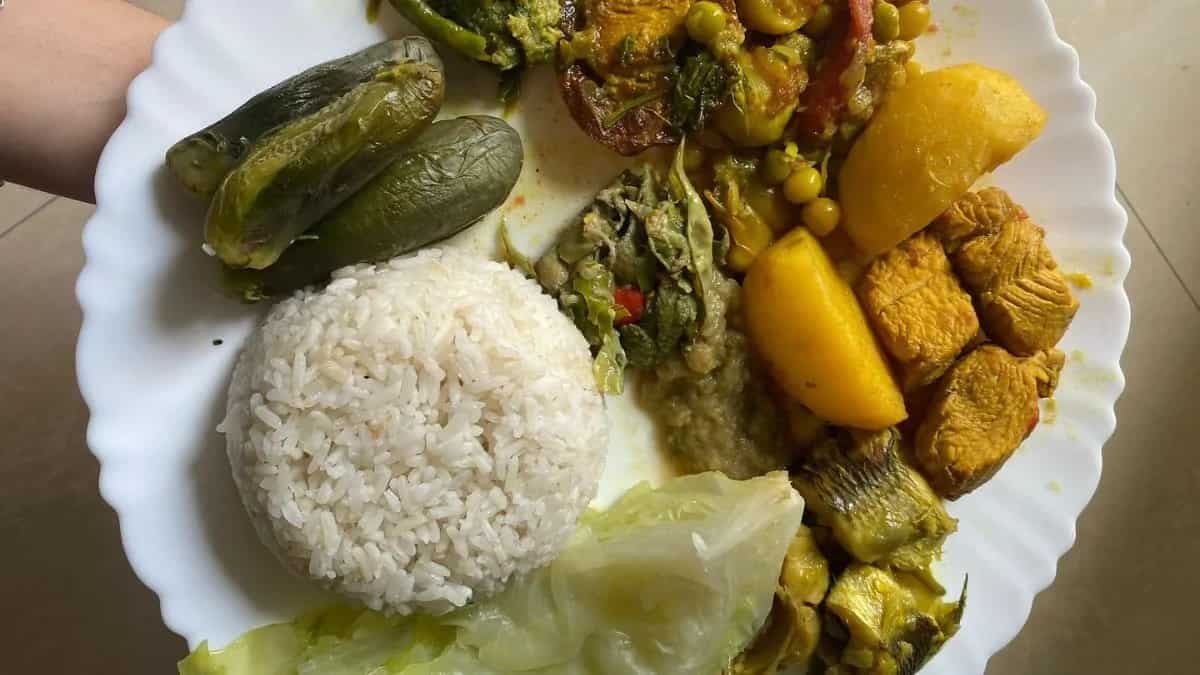The chakma or changhma people - are an ethnic group belonging to Western Myanmar, Bangladesh as well as occupy a significant place in the northeastern states of Mizoram, Arunachal Pradesh, Tripura and Assam. Considered to be a collective of 31 different clans, the cuisine of the tribal communities is mainly said to have plenty of fresh, seasonal vegetables, foraged ingredients, fish, pork and rice. Supplemented by millets, corn and mustard, rice beer is a commonly consumed beverage in homes, for festivals and special occasions.
Chakma Ingredients
Based on the season, the food choices change based on what is available; but since the tribals occupy dense forests in the Chittagong Hill Tracts, they boast of having access to over a hundred varieties of vegetables and fruits throughout the year. The principle of consuming the five different flavours during each meal is followed almost ritualistically - given that the usage of dry spices is almost negligent in traditional cooking. Believing in the ‘food is medicine’ philosophy, traditional elements like sidol or fermented shrimp paste, pidhe or rice cakes and shutki find themselves in almost every savoury delicacy.
Relying mainly on herbs, flowers and the stems of hillside plants for flavouring the cooking, multiple foraged ingredients are found during the four to six month monsoon season between mid-April to mid-September, following which preservation techniques are used to extend their shelf life and usage. Unique produce like Thai dragon tongue, bamboo shoots, wild mushrooms, ginger flower, turmeric flower and kanai dinga feature alongside bird’s eye chillies, garlic, onions, lemon basil, coriander leaves, parsley and turmeric powder; sometimes also using a few drops of oil. Meat dishes are seasoned predominantly with just turmeric and aromatics, using cumin powder on occasion.
Also Read:
Chakma cuisine is also heavy on consuming ingredients like leafy vegetables in their raw form or pre-boiled for a few minutes before consumption. Seasoned with a garlic-chilli salsa like condiment known as sidol morich battiye, a charcoal-roasted fish salsa called suguni morich battiye or suguni hurubo features popularly on meal plates.
Chakma Cooking Techniques
Sumoh Gorang

Image Credits: Wikimedia Commons
The word sumoh - which refers to a tube in the local dialect, is usually used as a descriptive term for a hollow piece of bamboo in which meat, fish, glutinous rice or poultry is typically cooked. Typically the protein is combined with a host of other ingredients and filled into the tube, allowing the meat or fish to marinate as it cooks, thus enhancing flavour and making the meat tender in texture. The mouth of the tube is usually sealed with banana leaves following which it is cooked on an open fire or coal embers for a couple of hours, turning it periodically for even cooking and heat distribution.
Maalah
Typically, the maalah technique involves a category of stuffed dishes sauteed with sidol, and combined with other ingredients. Produce such as peeled young bamboo shoots, teasel gourd, wildly grown snake gourd, bitter melon and wild eggplant are par-boiled or blanched, before being stuffed with a filling of dry fish and browned on the outside for a crispy outer layer as well as complex flavour.
Hebaang

Image Credits: Wikimedia Commons
Hebaang or what roughly translates as ‘burnt’ baking, involves wrapping marinated chunks of meat, fish, eggs or vegetables in banana leaves and baking it inside a clay oven or over coal embers. Layers of banana leaves help regulate the heat and become the foundation on which food is typically exposed to the heat source. The leaves themselves are heated on both sides as a way to make them more pliable, after which the mixture of food is placed in the centre, wrapped and tied with banana fibre. The cooked dish is infused with the sweet aroma and chlorophyll from the leaves, which amps up its nutritional value.
Taaba
Considered to be a health-conscious technique that simmers green vegetables in clear broth before eating them, the key flavour is derived from pieces of dry fish or shrimp and salt. The green veggies are then boiled over high heat for a few minutes before being transferred to another container where all the steam is allowed to evaporate, and the greens to retain their original colour. The soup-like mixture is usually eaten as is or with a serving of rice for a light and nourishing meal.
Khola
Essentially a one-pot method of cooking, khola usually involves adding all the ingredients for a khola-maach, khola-bhaat and khola-pork to an earthen pot in layers - allowing the heat to produce steam that cooks each element optimally. The mixture is then simmered gently, with potatoes added in at times to bulk up the delicacy as well as feed a larger group of individuals. Typically, khola delicacies are accompaniments meant to be eaten with rice and do not involve sealing the container for the ingredients to cook. Seasonings are usually limited to the addition of green chillies and turmeric powder, keeping the flavours clean and simplistic.


